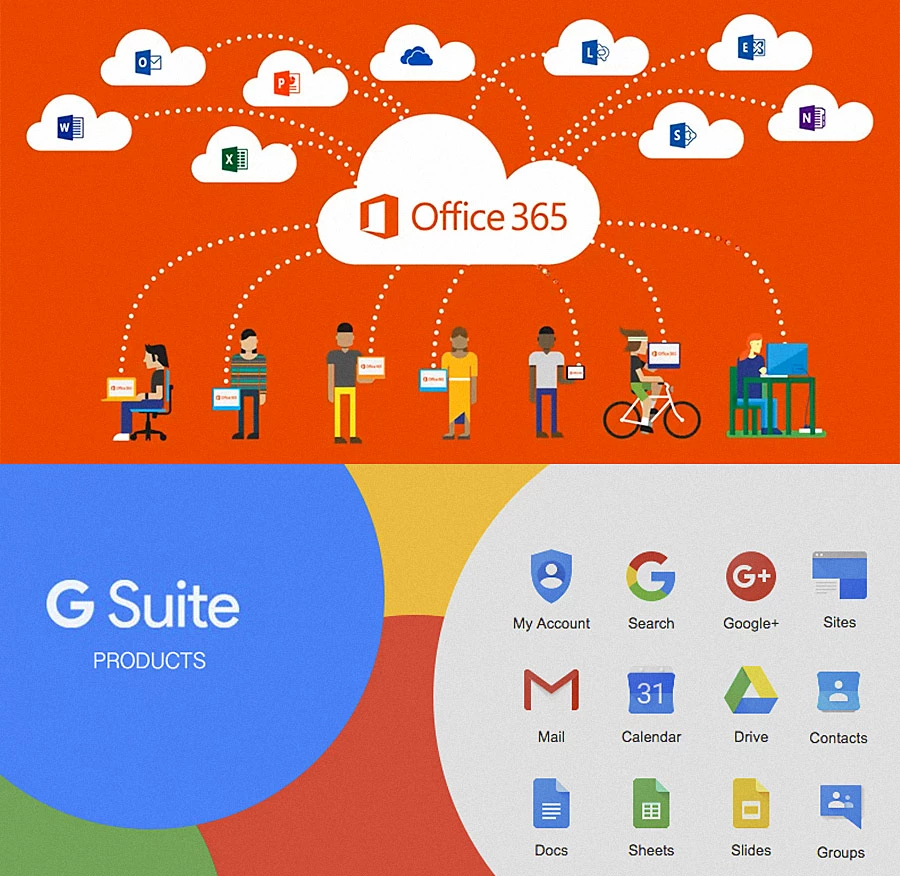On-line office tools will have you on cloud nine

Cloud applications are ever more popular with businesses, especially conglomerates and multinationals. During its latest quarterly earnings call, Google announced that over 3 million enterprises are now paying to use Google’s G Suite of office tools (formerly known as Google Apps for Work)!
Microsoft, for its part, recently announced that sales of its own cloud-bound application suite, Office 365, jumped by 47%, reaching 25 million subscribers.
What are these on-line productivity applications, and what are their advantages for enterprises?
Google G Suite, Microsoft Office 365
Both Microsoft’s and Google’s offerings are predicated on tools for everyday activities: Word and Docs for word-processing, Excel and Sheets for number-crunching, Powerpoint and Slides for presentations, Outlook and Gmail for communications and Skype and Hangouts for conferencing.
Their main attraction lies in simple, cheap and optimal user-licence management. Installations and updates are a thing of the past; so are licences that sit unused or that must be transferred when employees leave the company. The cost of on-line office suites is based on usage, which can be scaled up or down in real-time.
Better yet, cloud licences include on-line storage of any type of document. For example, Microsoft includes a whopping 1TB of storage space per licence!
Collaboration
Since on-line office suites are based on cloud architecture, they offer an unrivalled ease of file access and sharing. On-line, real-time collaboration on a single document, which was unimaginable just a few years ago, is now commonplace. All members of a team can now work together on a single document at the same time from different places. And since documents are saved in real-time on the cloud, they can’t be lost due to equipment failure or connection problems.
Furthermore, documents are accessible on all types of platforms in real-time. This means that you can start a document on your laptop, continue working on it on your tablet, and finish it (or at least approve it) on your smartphone. You can’t beat the cloud for productivity!
Security
But cloud applications also raise security concerns. How can you ensure that data stored on-line won’t fall into the wrong hands?
Google and Microsoft have worked hard to secure their on-line office suites and win clients’ trust. In fact, during the earnings call, Google’s CEO, Sundar Pichai, ascribed the Google G platform’s success with large enterprises to its high level of security. Over the last year, Microsoft has also retooled security and offered a slew of new tools.
Increasing Adoption
It seems to have paid off: companies are flocking to on-line office tools. Some sources say that 4 out of 10 large businesses are already using cloud-based tools or are in the process of implementing them. And no wonder, when the cloud takes on the chore of constant updates and offers greater flexibility to boot. According to Pichai, today’s cloud applications are just the beginning, since Google is constantly expanding its G suite partner ecosystem: “Our customers and partners are appreciating Google Cloud’s responsiveness to both their needs and aspirations”.
Given today’s evolving work environment, including telework, the advantages of cloud-based work tools are that much more attractive.

